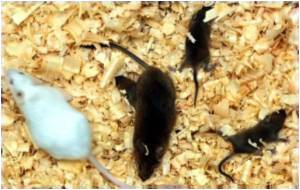
The coronavirus infects humans by binding to a protein, called DPP4, that sits on the surface of cells in the lungs.
But the structure of the mouse version of DPP4 is different and the virus does not bind to it.
Stanley Perlman, a microbiologist at University of Iowa in Iowa City, and his colleagues put the gene encoding human DPP4 into an adenovirus to which mice are susceptible.
They exposed the mice to the adenovirus - similar to a cold virus - through inhaled droplets that entered their lungs.
Advertisement
When the researchers had the mice inhale droplets containing the MERS coronavirus, the coronavirus bound to the human receptor and began taking over the cells.
Advertisement
The animals' immune systems responded and made antibodies to attack the MERS virus.
The mice never became sick or lost weight, however, which is something of a mystery, added Perlman.
"There is a great need for a small animal model for MERS," Shibo Jiang, a viral immunologist at the New York Blood Centre in New York, was quoted as saying.
According to Charles Rice, a virologist at Rockefeller University in New York, Perlman's work confirms that the presence of the human DPP4 protein allows mice to be infected, and is important to know before going through the trouble of making a transgenic mouse.
Source-IANS










